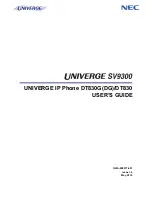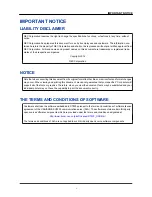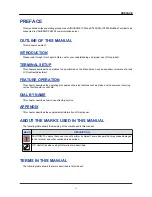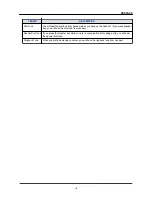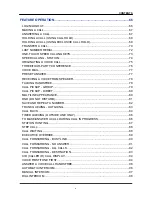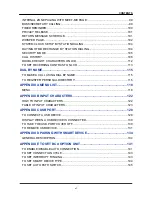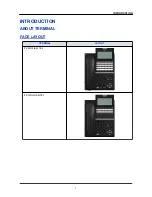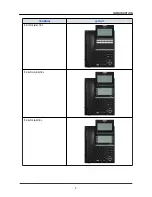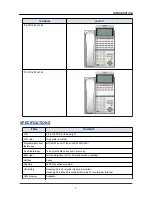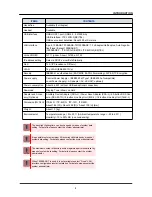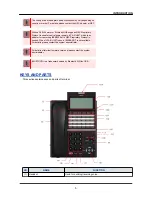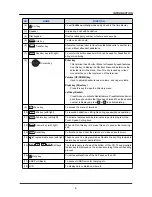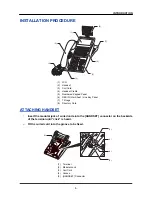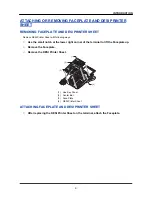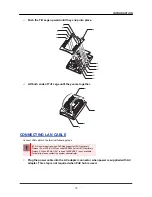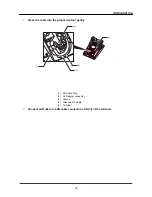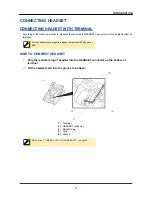
NO.
NAME
FUNCTION
(2)
Exit key
To exit the
Menu
or
Help
mode and go back to the time display.
(3) Speaker
Originating a call with handsfree.
(4) Dial keypad
Dial the called party number or feature access code.
(5)
Hold key
To place a call on hold.
(6)
Transfer key
Allows the terminal user to transfer established calls to another ter-
minal, without attendant assistance.
(7)
Speaker key (with light)
To control the built-in speaker which can be used for handsfree di-
aling or monitoring.
(8)
Redial
Cursor key
Enter key
This terminal has Shortcut Menu for frequently-used features.
Use this key to display the Shortcut Menu and determine the
selected item in the menu. Also, this key is used as cursor-
movement key on the local menu of the terminal.
Volume (UP/DOWN) key
Used to adjust speaker/receiver volume, and ringer volume.
Right key (Directory)
Press this key to open the Directory menu.
Left key (Redial)
Press this key to activate Redial feature. Press Redial and scroll
back through numbers that have been dialed. When the desired
number is displayed, press
or
to activate dialing.
(9)
Menu key
To access the menu of terminal.
(10)
Mic
Mic key (with light)
To respond handsfree. LED lights during speakerphone operation.
(11)
Feature key (with light)
To activate features such as terminal setup and to program One-
Touch Speed Calling keys.
(12)
Answer key (with light)
When LED on this key is lit, press this key to answer the incoming
call.
(13)
Recall key
To finish a call and hear the dial tone to make an another call.
(14)
Programmable keys (with light) These keys can be programmed as Flexible line key/Programmable
feature key by system administrator.
(15)
Soft keys
The feature name is shown at the bottom of the LCD. The appropriate
feature key is displayed on the screen according to the call handling
process.
(16)
Help key
To call up explanations of the Soft keys on the LCD.
(17) USB Port (Back)
To connect USB Device for charging etc.
(18) LCD
To display date or dialed number etc.
INTRODUCTION
6

